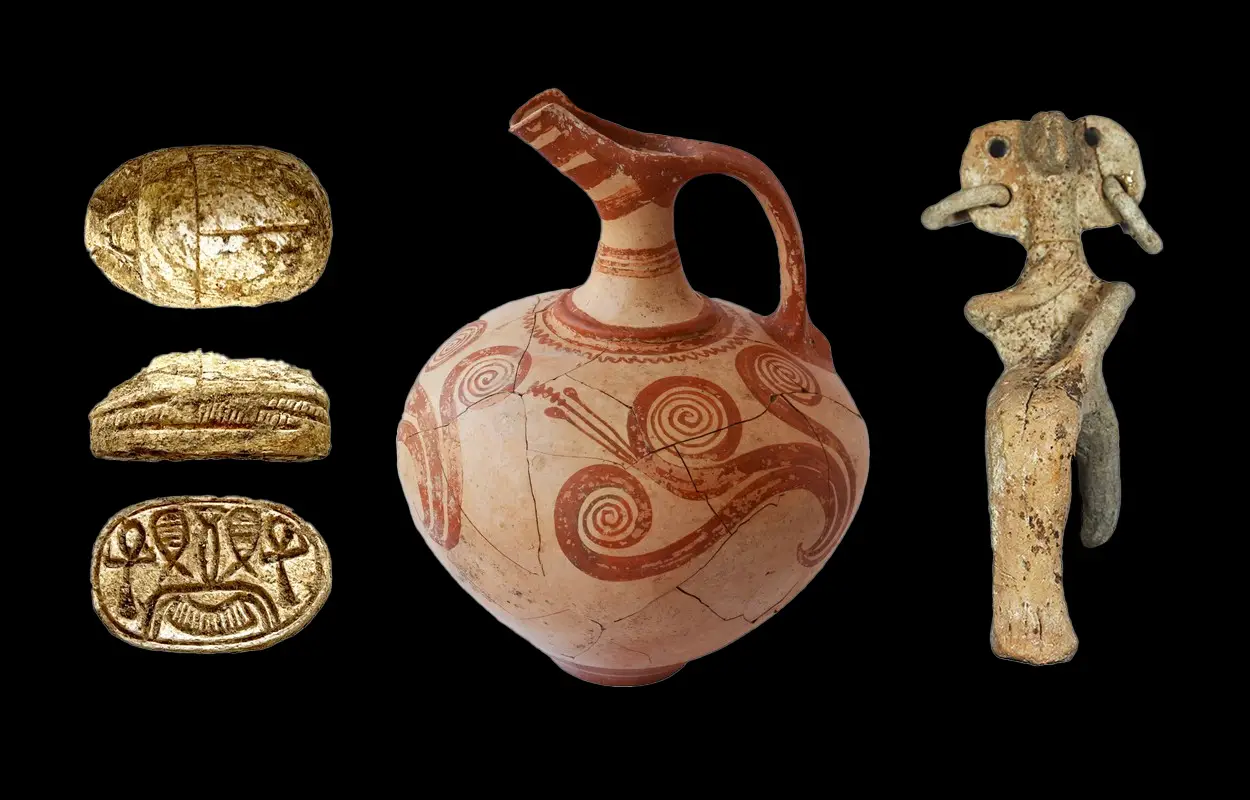The discovery of three Bronze Age tombs at Dromolaxia-Vyzakia has shed light on ancient trade routes connecting Cyprus with the Aegean, Anatolia, Egypt, and the Near East.
Dromolaxia-Vyzakia/Hala Sultan Tekke (abbreviated HST), was a Late Cypriot harbour city that flourished along the western shore of the Larnaka Salt Lake. The city emerged around AD 1630 and continued to thrive until the Bronze Age collapse in the 12th century BC.
In a recent excavation led by Professor Peter M. Fischer from the University of Gothenburg (Sweden), archaeologists uncovered three Bronze Age tombs (labelled ZZ, ABE, and ABW) dated to the 14th century BC.
The tombs contained a unique array of funerary objects, including a locally crafted clay figurine depicting a seated female in bird form, and two cylinder seals: one carved from haematite and the other from bronze, an unusual choice of material for seals during this period. Both seals are adorned with intricate reliefs of deities, humans, animals, and various symbols.
As well as locally produced pottery, tools, and jewellery, the tombs also contained a wide range of imported items from the Aegean region, such as the so-called “Chariot Kraters”, a high-quality pottery decorated with scenes of warriors carrying weapons.
A Neutron Activation Analysis of various pottery sherds also revealed that many Mycenaean vessels originated from the Peloponnese, primarily Berbati and Tiryns.
Other imports came from as far as Egypt, Anatolia, and the Near East, including ivory and hippopotamus bone artefacts, alabaster vases, precious metals, and scarabs. These luxury items suggest that the tombs belonged to elite families involved in international commerce.
A study of the skeletal remains determined that the tombs were used for multiple generations of burials. “Consequently, the study of the skeletal remains is ongoing, and the estimation of the number of individuals, their gender, age at death, pathology and trauma have to await further investigations,” said a representative from the Republic of Cyprus.
Header Image Credit : Republic of Cypru
Sources : Republic of Cypru





